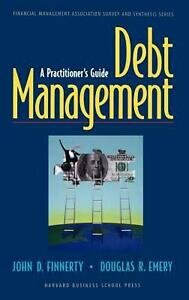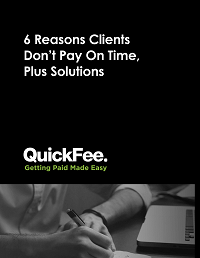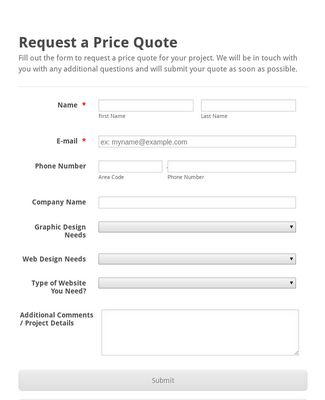Contents:


The value estimate for the business is $410,000, as shown in Table 11.3 “Capitalization of Excess Earnings ($)”. A controlling owner has different options for disposing of the investment or converting it to cash than does a noncontrolling owner. The controlling owner’s exit or liquidity options include selling the controlling interest, taking the company public, or deciding to liquidate the business. The noncontrolling owner’s exit or liquidity options include selling to the controlling owner or selling to another noncontrolling owner.
Often, the efforts of the new owner will be more influential in determining future success than continuing the same uses of assets already in place. Because the business valuation is usually being conducted to establish a selling price, the buyer should not pay the seller for the buyer’s anticipated improvements in the business. There are really four business valuation methods that you need to be aware of. Each uses a different aspect or variable of a business to calculate its numerical value — either a business’s income, assets, or using market data on similar companies.
Calculate COMPANY VALUATION: Procedure
” But that doesn’t mean your business is actually worth the value you’ve put on it. Returning to our $1 million example – we aren’t in a new market; we’re in the accounting industry. We’ll use historical data to calculate our growth because accountancy isn’t likely to see more growth as a whole than our hypothetical company will.

A special case of the corporate restructuring includes a distressed company valuation. We work closely with clients to understand their needs and to develop bespoke valuation solutions to complex issues. We focus on understanding the business dynamics of the company and identifying the key value drivers of the sector in which it operates. Liabilities include any debt or outstanding credit on your business’s books, and they detract from the overall value of a business. (That’s why this number is subtracted from the SDE in valuation calculations.) Often, sellers keep their business liabilities and pay off their debt after their business is sold. Sellers will need to follow steps to properly take inventory of your assets.
What Business Valuation Means to Investors
The annual financial statements of the last 5 years must be prepared in a transparent and easily understandable manner. Fluctuations in sales, slumps in profits, conspicuous jumps in costs, etc. must be able to be explained conclusively when asked. If you’re selling your business, online business-for-sale listings are a relatively new way to attract potential buyers. If you’re unsure how to find your business’s worth, speak with a business expert to get an accurate valuation. We spoke with experts who shared a few tips on how businesses can find their value. This article is for small business owners who want to calculate their business’s value for informational purposes or to prepare for selling it.
[INTERVIEW] ‘Growing default risk derails IPO plans’ – 코리아타임스
[INTERVIEW] ‘Growing default risk derails IPO plans’.
Posted: Wed, 15 Mar 2023 23:52:00 GMT [source]
For the average investor, research reports can offer insights into a company’s value. The business valuation process is an in-depth analysis, yet at the same time, it’s only an estimate. Business owners can test their company’s valuation using different scenarios using editable fields to test assumptions. For example, it’s easy for a company owner to see how expanding their business using debt would affect the business’s valuation. Scenario modeling helps small business owners see precisely how their valuation changes when they adjust the cost of goods sold, owner’s compensation, revenue, expenses, cash and cash equivalents, and long-term debt. The Internal Revenue Service uses a business’s fair market value to oversee tax-related events like gifting of shares or a company’s sale or purchase.
Factors Affecting the Value of Your Business
Understanding past performance is the key to planning future growth. Using several years’ worth of business valuations, specifically sale prices for certain transactions and price-to-earnings (P/E) ratio, companies can see how they’ve grown over time. They can also use this data to compare their growth to other companies in the same industry. Pre-money and post-money valuations depend on the timing of the valuation. If you cannot use earnings before interest, taxes, depreciation, and amortization and revenue, it’s essential to understand pre-money vs. post-money valuations. Companies on the cusp of exponential growth and startups in the pre-revenue stage may use multiple valuation methods blended together to arrive at an accurate valuation that facilitates their future growth.
The plan includes impact of inflation on operating and other related costs, total amount of fixed assets required in the initial years. Analysis of the income statement, cash flow statement, position statement balance sheet statement, and preparation of the break even analysis is also used to ascertain how much revenue a business needs to cover. The excel file contains all the graphs that are required to understand start up costs, revenue from operations, gross profits made in succeeding years, net profits made by the business or company. It also includes closing cash balance, and the business net worth in succeeding years, as well as charts for various business scenarios, including a realistic, optimistic, and pessimistic approach for the company. Check out our 5 year financial statement, modelling and valuation excel sheet, which is 100 percent editable and meticulously prepared and includes the best modelling and valuation methodologies. The income-based business valuation method uses two standard valuation methods to determine how much money a business may produce.
You might think that you can’t actually distill the value of your entire business to an exact number — and, sure, in a way it’s a bit of an estimate. But as a seller, you have to put some number on your operation, especially if you want to be compensated for what you’ve built, taking into account all kinds of equity. Finally, any current debts or future payments, called liabilities, are subtracted from the net income. Many or all of the products featured here are from our partners who compensate us.
- While this isn’t a named rule-of-thumb, it is a widely used standard in the industry.
- With an accurate business valuation, you can assess your company’s financial health to inform your plan to sell.
- Moreover, a formal business valuation can help to reconcile perceived opinions on value, and coupled with a marketability analysis, it can help a business owner determine relative value in the marketplace.
- Grigsby’s experience and knowledge prove to be his clients’ greatest assets.
This method assumes that the value of a business is simply the book value of its assets . According to this approach, if the market price of a company is higher than it’s book value, the company is potentially overvalued. When assessing the market value of their business, owners establish what the business is worth based on similar businesses that have recently been sold. Agoing concernasset-based approach, also known as book value, will review your company’s balance sheet, list the business’ total assets and subtract its total liabilities. Estimates a discounted cash flow value for a businesses alternative outcomes. The relevant discount rate minus the assumed rate of growth in future returns.
Values can change depending on how you plan to exit your business (e.g., liquidation may hold a lower value compared to transitioning control to a shareholder or a portfolio buyer). Your business valuation team can provide further insight on this range of value. The Discounted Cash Flow method looks to the future to predict cash flow value. The goal of a DCF analysis is to predict how much an investment is worth today based on predictions of how much revenue the business will generate in the future. We worked with a highly-leveraged family-owned manufacturing company to help them measure the recovery of the equity value of their business in the wake of the 2008 recession. The owner used the annual valuation to help them identify the right timeline to exit the business.
Need Business Insurance?
A https://bookkeeping-reviews.com/ is a suggestion of value, but your business model shows potential buyers how they’ll actually reach their customer base to generate revenue if they purchase your company. Most likely, business owners will provide you with that number, so it’s important to understand how the business owner reached that value, and what these values reflect about the actual business. Conducting a valuation is an excellent opportunity to assess the financial health and potential of your business, or of a business you’re hoping to buy. Along with doing financial legwork, valuing your business also requires you to exercise control over any emotions.
Solar Concentrator Market: The Solar Concentrator Market Size is to … – Digital Journal
Solar Concentrator Market: The Solar Concentrator Market Size is to ….
Posted: Fri, 17 Mar 2023 06:46:46 GMT [source]
The Conway Center for Family Business found that nearly half of family business owners have no succession plan in place. And while 70% of family businesses hope to pass it on to the next generation, only 30% will be successful in doing so. The valuation method used depends on the condition of the business and the purpose of the valuation. The discounted cash-flow method is generally used for healthy companies generating a profit. For an owner who may be looking for financing, considering a sale, or updating a financial plan, here are some common reasons for a business valuation. Your valuation (or, better yet, several years’ worth of valuations) can help you establish a track record of success to help instill confidence in potential lenders.
7 The Importance of Growth Rate on Firm Value
This influences which the beginner’s guide to using xero accounting we write about and where and how the product appears on a page. Before joining NerdWallet in 2020, Sally was the editorial director at Fundera, where she built and led a team focused on small-business content. This may influence which products we review and write about , but it in no way affects our recommendations or advice, which are grounded in thousands of hours of research. Our partners cannot pay us to guarantee favorable reviews of their products or services.

This would not make a big difference in the present-value calculations, giving $76,926 at a 10% discount rate and $49,425 at a 30% discount rate. The analyst who uses a discounted future returns approach must determine how far into the future to project. The general answer is as far as possible, keeping in mind that the uncertainty of the estimates increases as they get further away. Because a business is usually assumed to be a going concern, returns are presumed to continue indefinitely. Alternatively, the analyst could limit the analysis to a fixed time period, say 10 years. In this case, one makes specific annual projections for 10 years and estimates a terminal value of the business at the end of that period.
- A business owner’s claims about potential are sometimes discounted by buyers, unless those claims are supported by the type of in-depth historical and current data that is included in a good business plan.
- It’s crucial to consult various data sources, no matter which valuation method you choose.
- It’s hard to win in the game of business if you have no idea of the score or worse, even what game you’re playing.
- A business’s gross income, ability to repay debt, and capitalization of cash flow or earnings determines its current value.
We provide a comprehensive report with our models with detailed commentary, recommendation and conclusion. Gain in-demand industry knowledge and hands-on practice that will help you stand out from the competition and become a world-class financial analyst. Startups, in the most general sense, are new business ventures started by an entrepreneur. Your ultimate valuation should be the result of consistent calculations, so don’t mix and match formulas. That said, doing the math is free, so go ahead and plug your earnings numbers into different formulas and compare.
If you find discrepancies with your credit score or information from your credit report, please contact TransUnion® directly. Planning Your Exit and Business Valuation will focus on exit options and how business owners can develop a personalized exit plan. Because it is recommended to hire a reputable valuation service, the process can be costly to carry out. It’s also a time-consuming process given the amount of information that needs to be collected and analyzed. For larger businesses, the time and complexity involved often serves as a deterrent to engaging in regular valuation assessments. Post-money valuation looks at the value of a business subsequent to the investment of capital, often through some form of fundraising.
Leave a Response